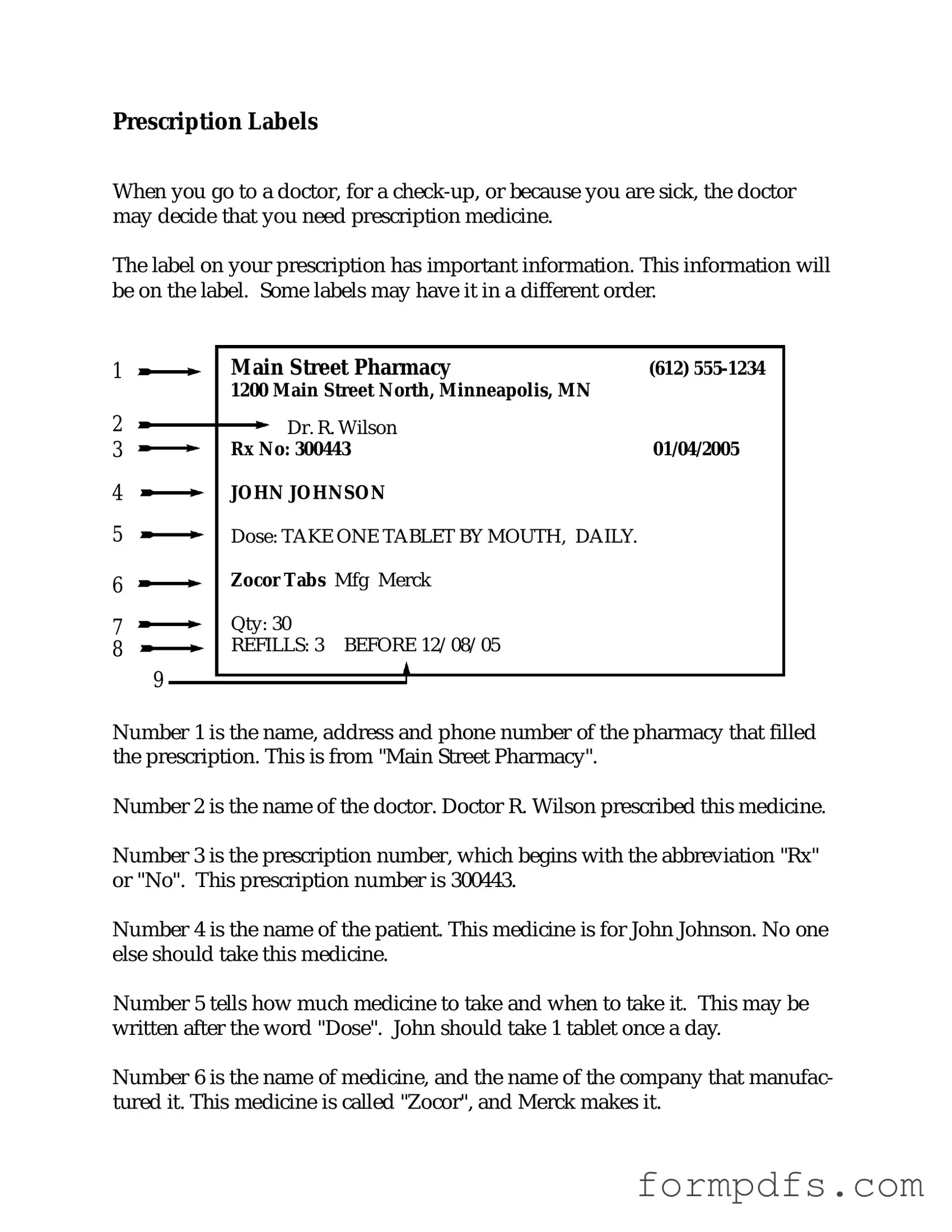What is the Prescription Label form?
The Prescription Label form is a document that outlines important information regarding a prescribed medication. It typically includes the patient's name, the prescribing physician's details, the medication name, dosage instructions, and any specific warnings or side effects. This form ensures that patients understand how to properly take their medication and helps prevent misuse or errors in administration.
Why is it important to use the Prescription Label form?
Using the Prescription Label form is crucial for patient safety. It serves as a clear communication tool between healthcare providers and patients. By providing detailed instructions and warnings, the form helps patients adhere to their treatment plans effectively. Moreover, it reduces the risk of medication errors, which can lead to serious health consequences.
How should I fill out the Prescription Label form?
When filling out the Prescription Label form, ensure that all sections are completed accurately. Start with the patient's full name and date of birth to avoid any mix-ups. Next, include the medication name, dosage, and frequency of administration. If there are any special instructions or potential side effects, these should be clearly stated as well. Double-check all information for accuracy before submitting the form to the pharmacy or healthcare provider.
What should I do if I notice an error on the Prescription Label form?
If you discover an error on the Prescription Label form, it is essential to address it immediately. Contact your healthcare provider or pharmacist as soon as possible to report the mistake. They can provide guidance on how to correct the information and ensure that you receive the correct medication and instructions. Prompt action can help prevent potential health risks associated with incorrect medication usage.
